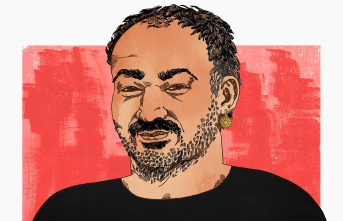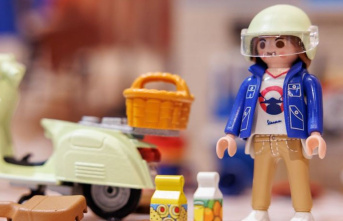"Funny Cat Videos", "Peace in Ukraine" and "Hot Chocolate" - thousands of handwritten happiness recipes and wishes adorn the walls of a small room in the Happiness Museum in the middle of Copenhagen city centre. In the room, visitors answer the question of their own personal happiness on yellow pieces of paper. "It's actually our absolute favorite room," says Catarina Lachmund of the Copenhagen Happiness Research Institute as she strolls through the sea of notes.
Lachmund is German and says he is "torn" between Scandinavia and Berlin. She quickly noticed differences in dealing with contentment and happiness between Germans and Scandinavians, who are generally said to have a high level of contentment. According to Lachmund, there are good reasons for this. A lot of people are doing very well, but above all there are extremely few people who are not doing well at all, she says.
World Happiness Report: Germany in 14th place
This is confirmed every year by the World Happiness Report, in which the Nordic countries always come out on top. This year, Finland was named the country with the happiest population for the fifth consecutive year. The happy Finns are followed by Denmark and Iceland. Germany comes in 14th place out of 146 listed countries. The report measures the level of life satisfaction in a country based on several factors such as gross domestic product, freedom of choice in life and social support.
Lachmund sees a decisive difference between the Nordic countries and Germany, especially when dealing with authorities. Trust in the government and authorities is greater in Scandinavia - she describes it as "almost unshakable". This basic trust was particularly evident in the peak phases of Corona. There have hardly been any major protests against the Corona policy in Denmark - unlike in southern neighbor Germany.
"The more stressors there are in my life, the..."
According to happiness researcher Tobias Rahm, bureaucracy is a factor that contributes to dissatisfaction in Germany. As a solution, the scientist from the Technical University of Braunschweig proposes: "Shut down and abolish unnecessary administrative thinking and unnecessary bureaucracy." Because: "The more stressors there are in my life, the greater the potential for having unpleasant feelings."
Scandinavian happiness also depends on genes. Happiness researchers are relatively unanimous that around 50 percent of the factors that make you happy and satisfied have genetic causes, says the happiness researcher Uwe Jensen from the University of Kiel. "Northern Europe is pretty well positioned there." In addition, there are extremely good living conditions, such as a high life expectancy, relative prosperity, little inequality and a lot of freedom. "That's a good way to live," explains Jensen. This also spills over to northern Germany.
On average, Schleswig-Holstein is the happiest in a country comparison
According to the "Happiness Atlas", people in Schleswig-Holstein, with their North German serenity, have been the happiest on average in a federal state comparison for years. "This is no coincidence, because a randomly selected Schleswig-Holsteiner - despite all the migration movements after the Second World War - is more likely to have Danish genes than, for example, a Saxon," says Jensen.
According to the researcher, traditions and customs also have a positive effect on happiness. These avoided stress, for example, and regularly reminded people of the brighter side of life.
Scandinavian traditions such as the Danish "hygge" culture are good examples of how customs can create genuine feel-good moments. According to Lachmund, there is no translation for the everyday term, but there are several things that are associated with it, such as warm drinks, candles, open fire - and mostly in company. Hygge can also be the classic Sunday roast. "The longer it simmers, the more hygge it is," says the 37-year-old.
And we Germans?
Happiness researcher Rahm can imagine that "in Germany we are moving a bit more towards perfectionism than is the case in some other countries". This can lead to lower life satisfaction. Can one learn this contentment? You can "explicitly train and impart skills that are good for a long-term, happy and successful life". This includes treating people the way you would like to be treated yourself.
Rahm would like the awareness of well-being to be higher in Germany, and Lachmund describes an example from everyday life in Copenhagen: "It's not that much warmer or brighter in Berlin than here, but dealing with it is just different." , she says. "People force themselves out of Berlin and somehow don't slow down." If you go out in Denmark, "then for real, real quality time and not for a beer around the corner".
"City trips with my mom", "puppies" or "corona vaccinations" is written on the note in the Happiness Museum - happiness is diverse. Is there a Danish recipe for happiness when it comes to contentment that Germans can learn from? Laughing mouth doesn't have to think long, the answer seems simple: "It's not that bad. It'll be fine!" She says confidently.












